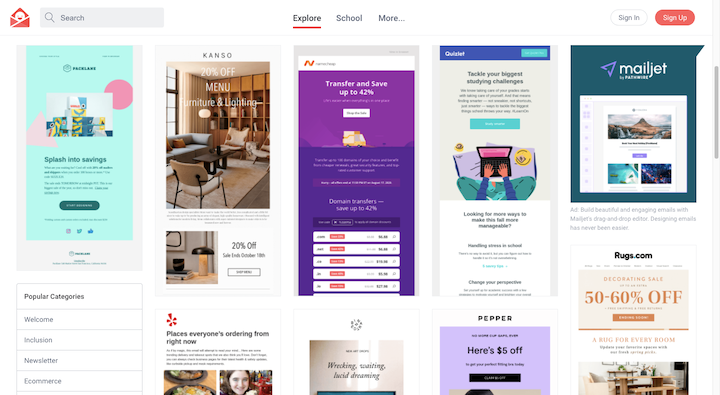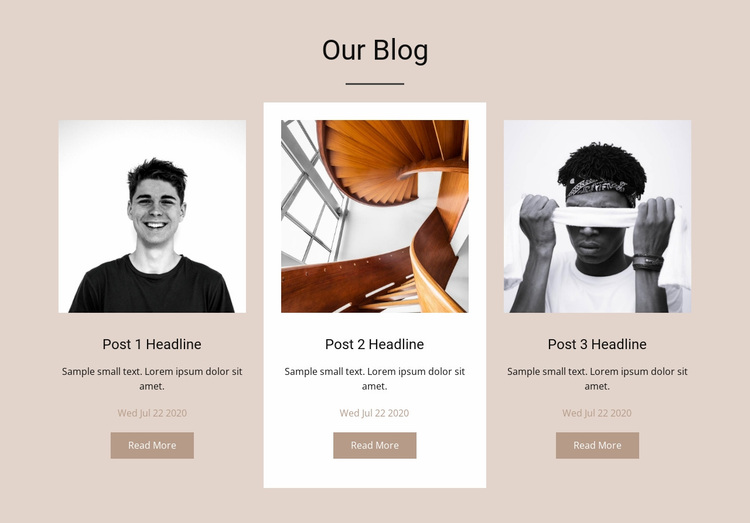How a Clean and Simple Website Design Can Enhance Your Site’s Usability
How a Clean and Simple Website Design Can Enhance Your Site’s Usability
Blog Article
The Ultimate Guide to Modern Website Style Trends
In the ever-evolving electronic landscape, contemporary website layout trends play a critical role fit customer experience and involvement. From the increase of minimalist design concepts that focus on simpleness to the impact of strong typography in specifying brand name identification, each element adds to a natural on the internet existence. The focus on responsive and mobile-first approaches, along with ingenious microinteractions, additionally improves use. Moreover, the growing focus on lasting internet design techniques shows a dedication to environmental duty. These patterns collectively increase vital concerns about the future of effective internet design and what it implies for customers and companies alike.
Minimalist Style Principles
Minimalist style concepts highlight the idea that much less is extra, promoting for simpleness and capability in visual communication. This approach remove unnecessary elements, concentrating rather on crucial components that share the desired message efficiently. By prioritizing clearness, minimal style improves individual experience, allowing visitors to navigate sites effortlessly.
Core tenets of minimal design consist of making use of ample white space, which produces a feeling of equilibrium and company. This unfavorable area not just directs the audience's focus to crucial elements yet additionally cultivates a soothing aesthetic ambience. Furthermore, a restricted shade palette is commonly used, utilizing soft shades or monochromatic plans to maintain aesthetic communication and prevent overwhelming the individual.
Typography plays an important duty in minimal style, where clear typefaces are chosen for their simplicity and effectiveness in connecting content. Ultimately, minimal design principles grow a concentrated atmosphere that encourages users to involve with the web content, boosting the total effectiveness of modern internet site style.
Strong Typography Selections
Accepting vibrant typography selections has actually ended up being a specifying attribute of modern site design, as it efficiently catches attention and conveys strong messaging. Designers are progressively using typography not simply as a useful element yet as a vital aesthetic part that improves the total aesthetic and individual experience.

Additionally, the association of vibrant typography with minimalist design concepts enables striking contrasts, improving readability while preserving visual allure. Making use of whitespace around bold message further stresses its value, making sure that the message reverberates with the target market.
As electronic landscapes come to be extra affordable, leveraging strong typography makes it possible for brands to distinguish themselves and leave a long-term impact. The careful selection of font styles and their application can stimulate emotions, establish tone, and drive action, making bold typography an essential tool in modern-day internet site layout. Inevitably, it is a powerful means to enhance narration and make certain that vital messages are not just seen however also really felt.
Receptive and Mobile-first Style
Receptive and mobile-first design has emerged as a critical principle in modern website development, mirroring the boosting dependence on mobile phones for accessing on-line web content. As user behavior shifts in the direction of mobile browsing, developers must focus on creating experiences that adjust seamlessly across various display dimensions and resolutions.
A receptive layout makes sure that a site instantly readjusts its format, photos, and capability based upon the tool being made use of. This strategy boosts individual experience by supplying regular navigating and readability, irrespective of whether the visitor is on a smart device, desktop, or tablet computer. Mobile-first design advocates for creating websites initially for smaller screens, ultimately scaling up to larger display screens. This strategy urges an extra streamlined and reliable design process, focusing on essential content and capability initially.
Executing mobile-first and receptive principles not only satisfies customer preferences but also lines up with search engine optimization (SEO) methods. Major internet search engine, like Google, focus on mobile-friendly sites in their positions, making it vital for organizations to embrace these style techniques. In a competitive digital landscape, welcoming receptive and mobile-first layout is not simply a choice; it is vital for guaranteeing access and involvement with a diverse audience.
Engaging Microinteractions
Microinteractions play a pivotal role in enhancing individual interaction and total internet site experience, particularly in the context of mobile-first and receptive layout. These subtle layout components provide prompt responses to individuals, making communications a lot more enjoyable and intuitive. Examples include switch computer animations, notice alerts, and loading indicators, which not just overview individuals yet likewise produce a feeling of connection with the interface.
Including appealing microinteractions can considerably boost functionality by reducing cognitive lots. find out here When individuals get aesthetic or acoustic comments upon carrying out actions, such as clicking a switch or submitting a kind, they really feel more confident in their selections. This promotes a smoother navigation experience, inevitably increasing individual retention.

As internet site style trends remain to progress, the importance of microinteractions can not be overemphasized. They offer as the subtle yet powerful touchpoints that transform regular interactions right into remarkable experiences, thus boosting the general efficiency of modern-day web style.
Lasting Website Design Practices
Sustainable web style practices are coming to be progressively important as the digital landscape grows and ecological worries increase. Designers and designers are acknowledging their responsibility to create web sites that not just serve customer demands yet additionally minimize environmental effect. This approach incorporates numerous vital methods.
Firstly, maximizing power consumption is critical. Sites need to be created to pack rapidly and effectively, which minimizes server power usage and enhances user experience. Methods such as photo compression, lessening HTTP requests, and making use of modern-day coding methods add considerably to this goal.
Secondly, picking eco-friendly organizing service providers is crucial - website design. Many hosting firms are currently powered by renewable resource resources, allowing websites to operate in a much more lasting way. This option reflects a dedication to minimizing carbon footprints
Additionally, adopting a minimalist design can boost sustainability. Fewer components on a page lead to much less data transfer, which not just quickens filling times yet additionally conserves resources.
Lastly, advertising digital access makes sure that websites get to a bigger audience without unneeded bloat, straightening individual experience with environmental responsibility. By incorporating these sustainable practices, internet designers can add favorably to both customer involvement and the earth's well-being.
Verdict
In summary, modern internet site style patterns highlight the assimilation of minimal visit the website principles, bold typography, and responsive layout to enhance user experience. Embracing these patterns is crucial for producing impactful electronic experiences that reverberate with customers in an increasingly affordable on the internet landscape.
In the ever-evolving electronic landscape, contemporary site style trends play an essential duty in forming individual experience and involvement. By focusing on clearness, minimal design enhances user experience, permitting site visitors to browse internet sites easily.
Eventually, minimalist design principles grow a concentrated environment that encourages users to engage with the web content, improving the total effectiveness of modern web site layout.Microinteractions play a crucial function in boosting customer interaction and overall web site experience, especially in the context of mobile-first and responsive style.In summary, contemporary website layout patterns highlight the assimilation of minimal principles, strong typography, and receptive style to enhance user experience.
Report this page